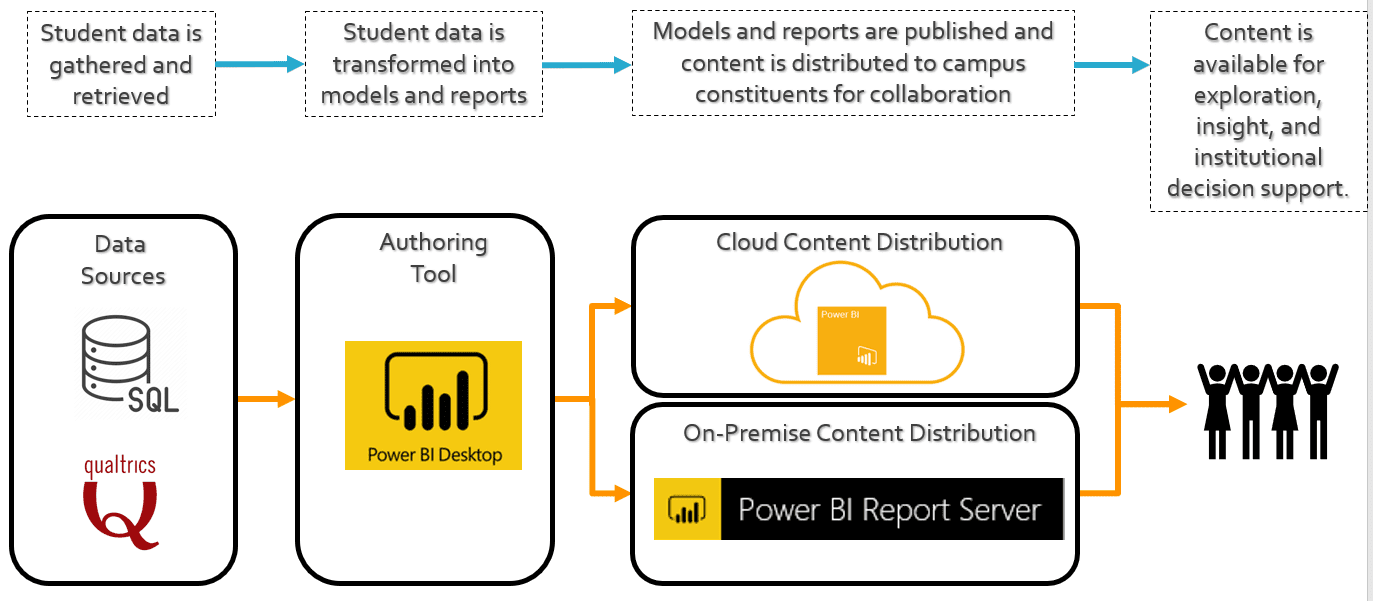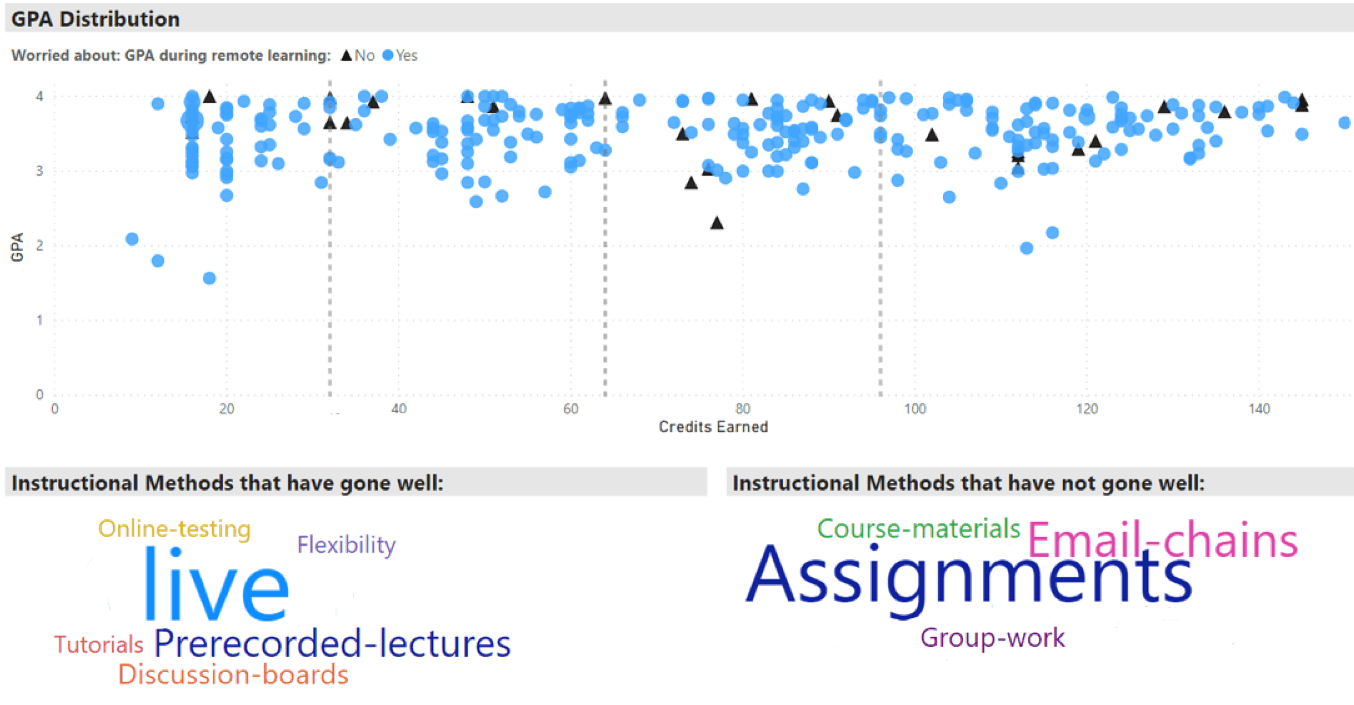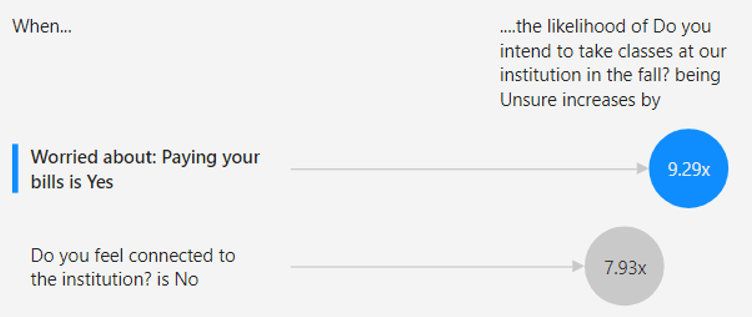Last year, the Association for Institutional Research (AIR), EDUCAUSE, and the National Association of College and University Business Officers (NACUBO) came together to make a bold statement:
Analytics can save higher education.
It was the first time these three national associations, which collectively serve
2,500 institutions and 22 million students, have publicly converged to make a call to action.
So why would they do this?
I asked myself that, too, listening to the announcement of the initiative last September.
Working in education, in general, is often described as a labor of love—the “why” matters a lot. And the power of serving a strong purpose propels many who choose a profession in education.
The collaboration for this initiative turned out to be no different: The faculty, staff, and affiliates involved are committed to helping their institutions use analytics to gain insight and act on complex issues.
To accompany the call to action, the associations outlined six principles to accelerate the meaningful use of analytics in higher education decision support:
- Make it an institutional commitment.
- Establish a team approach.
- Prepare for setbacks.
- Invest time, talent, and money.
- Understand it has real impact on real people.
- Take action now.
From my experience working in higher education decision support, I support the commitment and its principles. And I understand it is not as easy as it sounds.
This three-part series will elaborate on why and how to drive organizational change in higher education with analytics. The three key improvement areas I will focus on are components of institutional identity, including purpose, culture, and brand:
- Purpose: Put students first by providing responsive and timely support.
- Culture: Promote inclusivity in the decision-making process.
- Brand: Be strategic in an ever-changing landscape.
Before I get into those, I want to acknowledge some past and existing barriers to progress. Specifically, the intentional and unintentional misuse of analytics is consequential. Responsible use of data should always be a top priority, coupled with training, transparency, and a shared understanding of any underlying methods used. These barriers should not prevent institutions from using analytics to drive organizational change. Instead, they should be used to lead conversations about how to design and improve processes, protocols, and skills throughout the institution.
Now, let us discuss how analytics can help institutions fulfill their purpose:
Put students first by providing responsive and timely support.
Most university mission statements include aspirations emphasizing student learning, such as: “We nurture lifelong learners” or “We are a learner-centered research university.” It is, therefore, imperative to prioritize student learning as a top reason for higher ed leaders to commit to using analytics to improve higher education.
And we should do it now.
While the current climate might not seem ideal to launch an analytics initiative, faculty, staff, and students agree student learning is critical in this new environment. Institutional leaders know that they must make adjustments to support student learning and will need help determining how to best do that.
The following example in practice is a sample illustration involving responsive and timely support for student learning through the COVID-19 pandemic. This university, like many, transitioned to a remote learning environment in the middle of the Spring 2020 semester. To determine and prioritize student needs, they paired student data with real-time survey data administered during the transition. Microsoft Power BI was used to transform and analyze the data to make actionable content available to student support service providers, faculty, and senior leaders.
The high-level conceptual illustration of this deployment is as follows:
Immediate Needs Solution
At the beginning of the transition to remote learning, data mining the survey results revealed that the institution had to address some immediate physiological needs to support students:
Using drill-through capabilities, student support service providers were able to contact each student the same day to provide or arrange for resources. Technology needs, such as access to laptops and the internet, were also addressed early.
Remote Learning Insights
After remote learning began, timely check-ins with students revealed that regardless of how far along they were in the student lifecycle, most students were increasingly worried about their GPA. To supplement that, faculty and student feedback indicated the most and least effective instructional methods across the institution:
Using this data, synchronous courses were identified as the most effective instructional method for faculty and students. To facilitate prioritization of this instructional method, additional funding was secured to fund faculty-led mentor workshops for synchronous courses, while a technology committee is assessing learning management systems to improve assignment and course-material delivery.
Retention Modeling with Artificial Intelligence (AI)
AI methods were used to determine the key influencers involved in whether students plan to return to the institution in the fall. Expectedly, students were almost 10 times more likely to be unsure about their return if they had financial concerns. Nearly as important, if students reported feeling disconnected or dissatisfied with the transition to remote learning, they might be less likely to return.
On the flip side, for students who are likely to return, top influencers included: feeling connected to the institution and preferring synchronous course lectures as an instructional methodology. In other words, AI intelligence takes text into account as well.
These results helped senior leaders prioritize applying for grants to help students with financial needs and increase virtual town halls, appointments, and live hosted events to keep students connected.
Summary
The primary reason to drive organizational change in higher education with analytics is to put students first by providing responsive and timely support. In the example provided, the university was able to meet students’ needs because they had the information they needed at their fingertips, enabling them to act quickly.
Next time, we will discuss why and how to use analytics to promote inclusivity in the decision-making process.
Until then, we would love to help you!
Contact us to learn how we can help you envision, build, and deploy a modern analytics platform.








